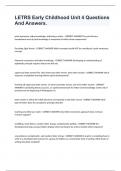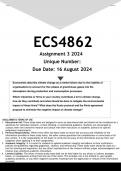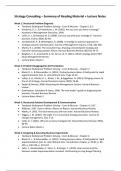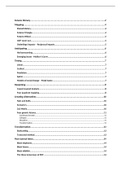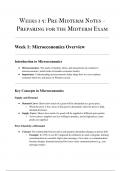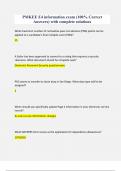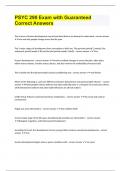Lecture 1 – Observations (Meijering)
Data source: physical reality -> data collection method: observation
Observation: a systematic method of data-collection that relies on a researcher’s ability to gather data
through his or her senses (O’Leary, 2004).
RQ example: how is fresh water distributed among the people of village X in India?
This is unstructured: capture anything that is of interest for the RQ => qualitative data.
Details notes are made.
RQ example: Birds. More quantitative data. This is more structured.
Why use a researcher as measurement instrument?
- To study actual behaviour
- Difference between what people say and do
- Impossible to ask questions
- When little is known about a phenomenon
- When you want to collect rich/detailed information
Types of observation:
Structured vs unstructured:
Unstructured:
- Capture event as naturally as possible, record everything of interest
- Taking observational notes in the form of a narrative description (qualitative)
Structured:
- Observing and taking notes systematically, according to predetermined rules
- Focus on specific elements and quantifies
- Use of observation checklist (coding scheme)
Participant vs non-participant:
Degree of involvement can be high, low and no.
Type of participation: complete, active, moderate, passive, non-participation
Covert vs overt:
Covert: people are unaware that they are being observed
- Observer is hidden
- Hides his research identity
- Ethical issues: informed consent
Overt: people are aware
- Reactivity issues (people change behaviour because of observation)
Natural vs controlled:
Natural: observing without interfering; observing natural behaviour
Controlled: observing while introducing a stimulus: provoking an activity, but validity issues
Making qualitative notes (unstructured):
Focus on something is important: this is done in RQ’s.
Interpretation is an issue. Stay with the facts when doing unstructured interviews.
Make scratch notes;
- Notes made during observation
- Serve to facilitate memory
- Write down what you observe concretely (be aware of too much interpretation)
- Interpretations may be added (but should be labelled)
- Think about useful abbreviations
- Write down the time (depending on the situation, every few minutes)
Make full field notes; (factual)
1

